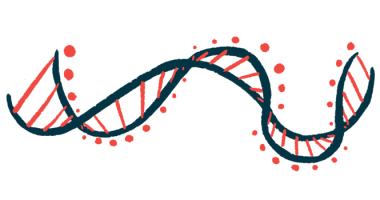Medication interaction triggers Cushing’s syndrome in man, 67
Symptoms develop after combination of steroid and anti-fungal medicine

An interaction between an anti-inflammatory steroid and an anti-fungal medication led to the onset of Cushing’s syndrome and reduced adrenal gland function in a man being treated for complications from a bone marrow transplant.
A case report on the 67-year-old man’s symptoms highlights possibly serious consequences from these medicines’ interactions.
The man’s case was described in “Cushing syndrome and tertiary adrenal insufficiency from prolonged concomitant use of budesonide and posaconazole,” published in the Internal Medicine Journal.
Cushing’s syndrome is a broad term that refers to disorders driven by excess levels of cortisol, a hormone made by the adrenal glands.
Corticosteroids are a class of medications that work by mimicking cortisol’s activity in the body. Since they have powerful anti-inflammatory properties, they’re often used to treat autoimmune disorders, as well as to prevent inflammatory complications and rejection following a transplant. But high levels of corticosteroids in the body for a prolonged period of time can lead to the side effect of iatrogenic, or drug-induced, Cushing’s syndrome, so these medicines are usually used with caution.
A specific corticosteroid called budesonide (sold under the brand name Entocort, among others) is often used to manage inflammation in the gut. After going through the intestines, the corticosteroid is usually broken down by a liver enzyme called CYP3A4. This enzyme usually enables budesonide to exert its anti-inflammatory effects, specifically in the intestines, without increasing cortisol levels in the entire body.
However, certain anti-fungal medications can block the activity of CYP3A4. When budesonide is given in combination with these medications, it isn’t broken down by CYP3A4, which may cause its levels to rise throughout the body.
That’s what happened in this case report.
Symptoms after post-transplant treatments
A man with acute myeloid leukemia, a type of bone marrow cancer, had undergone a bone marrow transplant to receive a sibling’s healthy blood cell precursors.
Shortly after the transplant, the man developed severe diarrhea, and tests showed that transplanted cells were launching an inflammatory attack against his intestines. This gut graft-versus-host disease is a fairly common and potentially serious complication of bone marrow transplants.
To manage this complication, the man was started on budesonide, as well as other corticosteroids. The powerful anti-inflammatory medications rapidly resolved his gut inflammation, and after a few weeks, he had stopped taking all the corticosteroids except for budesonide.
At the same time the man was started on corticosteroids, he also began the anti-fungal medication posaconazole (sold under the brand name Noxafil). The goal was to lower the risk of fungal infections, since corticosteroids would weaken his immune system and put him at a higher risk of contracting them. But posaconazole is one of the medicines that blocks CYP3A4.
After a few weeks of being on budesonide and posaconazole, he started showing many symptoms indicative of Cushing’s, such as a rounded face, a buildup of fat between the shoulder blades, and unusual bruising. Once Cushing’s syndrome was recognized, treatment with budesonide was tapered and stopped over the course of 10 days.
Immediately after stopping budesonide, lab tests showed the patient had abnormally low cortisol levels. Such levels are a common complication following drug-induced Cushing’s syndrome. When a medication causes cortisol activity in the body to be excessively high, the body’s normal quality-control systems stop the adrenal glands from making more. That can lead to what is known as adrenal insufficiency.
Once that medication is stopped, though, cortisol levels plummet before those same quality-control systems kick in, driving the adrenal glands to start making it again. Indeed, a few months later, the man’s cortisol levels were back within normal limits.
Overall, this case highlights the potential consequences of the interaction between budesonide and anti-fungal therapies, such as posaconazole.
“This paper describes a case of severe iatrogenic Cushing syndrome and tertiary adrenal insufficiency because of this interaction, highlighting the necessity for improved awareness of this phenomenon,” the case report’s author, Andrew Grigg, wrote.







